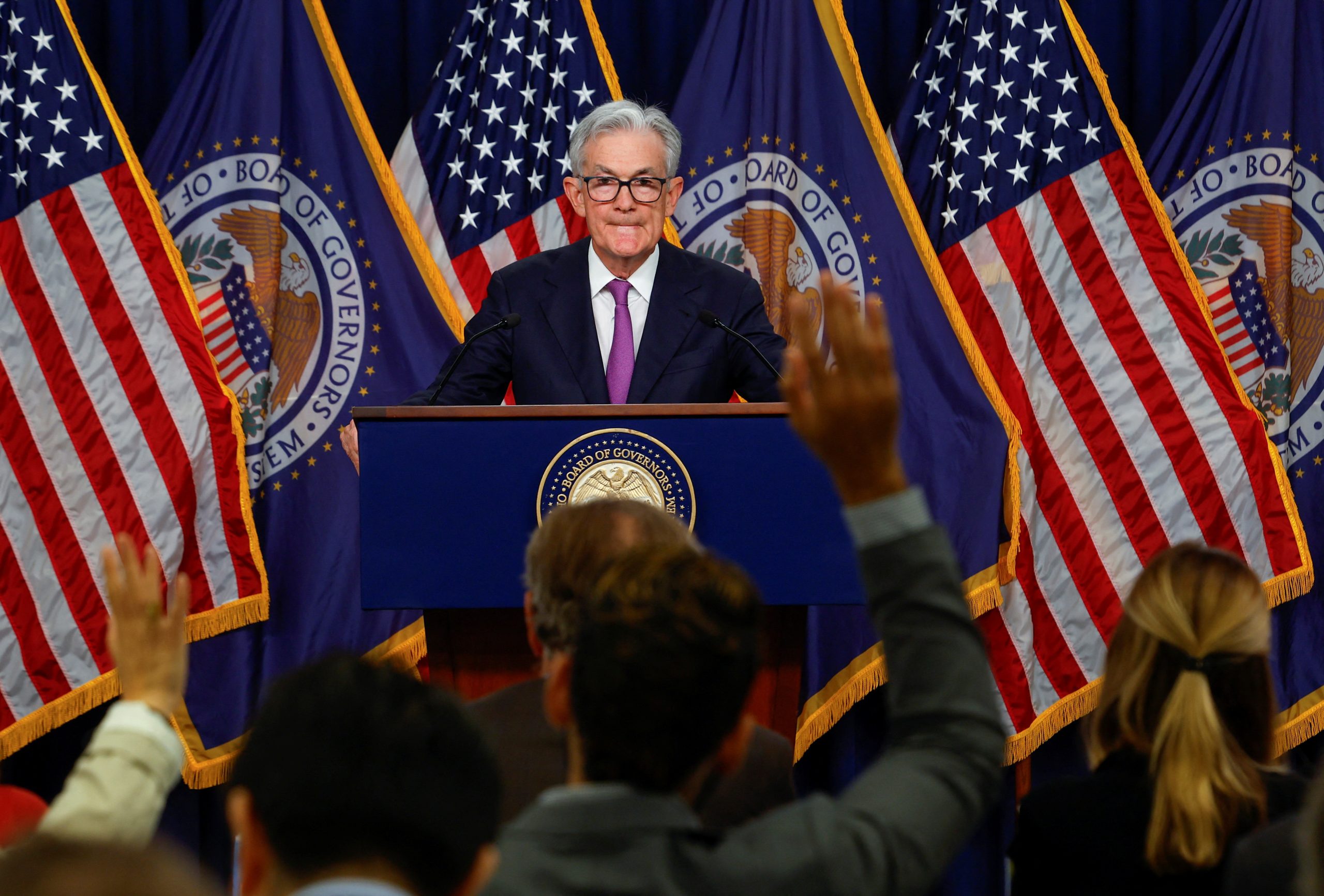
Chris Lange, FISM News
[elfsight_social_share_buttons id=”1″]
The Federal Reserve held its benchmark rate steady for the second time Wednesday to evaluate how the economy is doing amid higher borrowing costs.
The widely expected decision kept interest rates at 5.25% to 5.5% – the highest level since 2001 – with no changes. But Fed officials outlined a stricter policy path moving forward in an inflation battle they now see lasting into 2026.
The majority of Fed officials present at Wednesday’s meeting anticipated that rates will increase by another quarter point this year to 5.6%, based on new economic projections released after the meeting. Fed officials expected their target interest rate to rise above 5.5% this year, signaling one additional rate hike by December.
“We’re prepared to raise rates further, if appropriate, and we intend to hold policy at a restrictive level until we’re confident that inflation is moving down sustainably toward our objective,” Chairman Jerome Powell told reporters at a post-meeting press conference.
POWELL: ‘WE NEED TO SEE MORE PROGRESS’
Powell stressed that “We haven’t yet felt the full impact of what we have done so far with rates,” which the Fed has hiked 11 times since March 2022.
“We want to see convincing evidence, really, that we have reached the appropriate level,” Powell continued. “We’re seeing progress, and we welcome that. But, you know, we need to see more progress before we’ll be willing to reach that conclusion.”
Financial Issues host Shana Burt said that the statement shows that Powell is aware “that monetary policy has lagging impacts.”
She explained that “the Fed leads from behind” because it relies on “a lot of data that is lagging.”
“Employment data, for example, is a lagging indicator. It shows us where parts of the economy are now because of what’s already happened,” Burt said.
“I don’t think that the Fed should raise rates. I don’t think that they will, if they are data dependent, because I don’t think the data is going to warrant that,” she added.
Wednesday’s U.S. Central Bank meeting came on the heels of last week’s Labor Department report that the consumer price index, a key measure of inflation, rose 0.6% in August. On a yearly basis, prices jumped by 3.7%. That’s significantly lower than the 9.1% peak of last summer but still nearly double the Fed’s elusive 2% target rate.
Meanwhile, borrowing costs have soared to their highest level in more than two decades, making it harder for Americans to take out mortgages and other loans, with many racking up more high-interest credit card debt to pay for expenses. The Fed has endeavored to reduce demand for big-ticket items, like homes and cars, in its efforts to tame the highest inflation the nation has seen in four decades.
‘WE’VE ALREADY HAD A MILD RECESSION’
Quarterly forecasts indicate that elevated rates are here to stay for a while. The Fed doesn’t plan to cut interest rates until 2024, to a rate of about 5.1%. In June, officials anticipated that borrowing costs would drop to 4.6% in 2024.
Burt said that the real question on everyone’s mind is whether or not the economy is headed for a recession.
“We’ve already had a mild recession,” she said. “We technically did have two quarters of negative GDP at the beginning of 2022. Just this year, we’ve had a recovery from the gross domestic income recession and the corporate earnings recession. So we had two negative quarters in both of those and the economy seems to have moved past that.” Burt pointed out that the U.S. is already seeing “a weakening labor market.”
This article was partially informed by Fox Business, Reuters, and CBS News.
